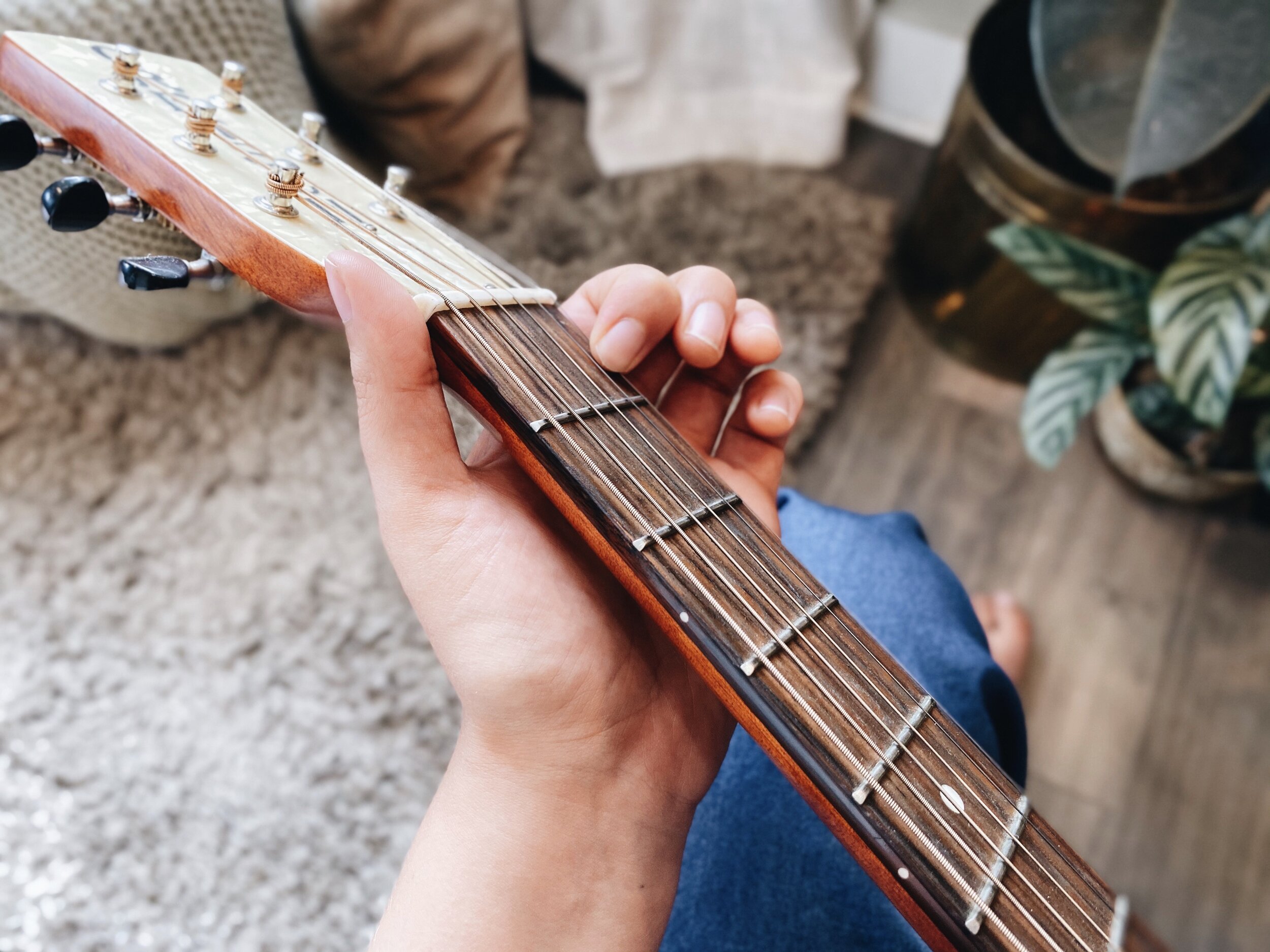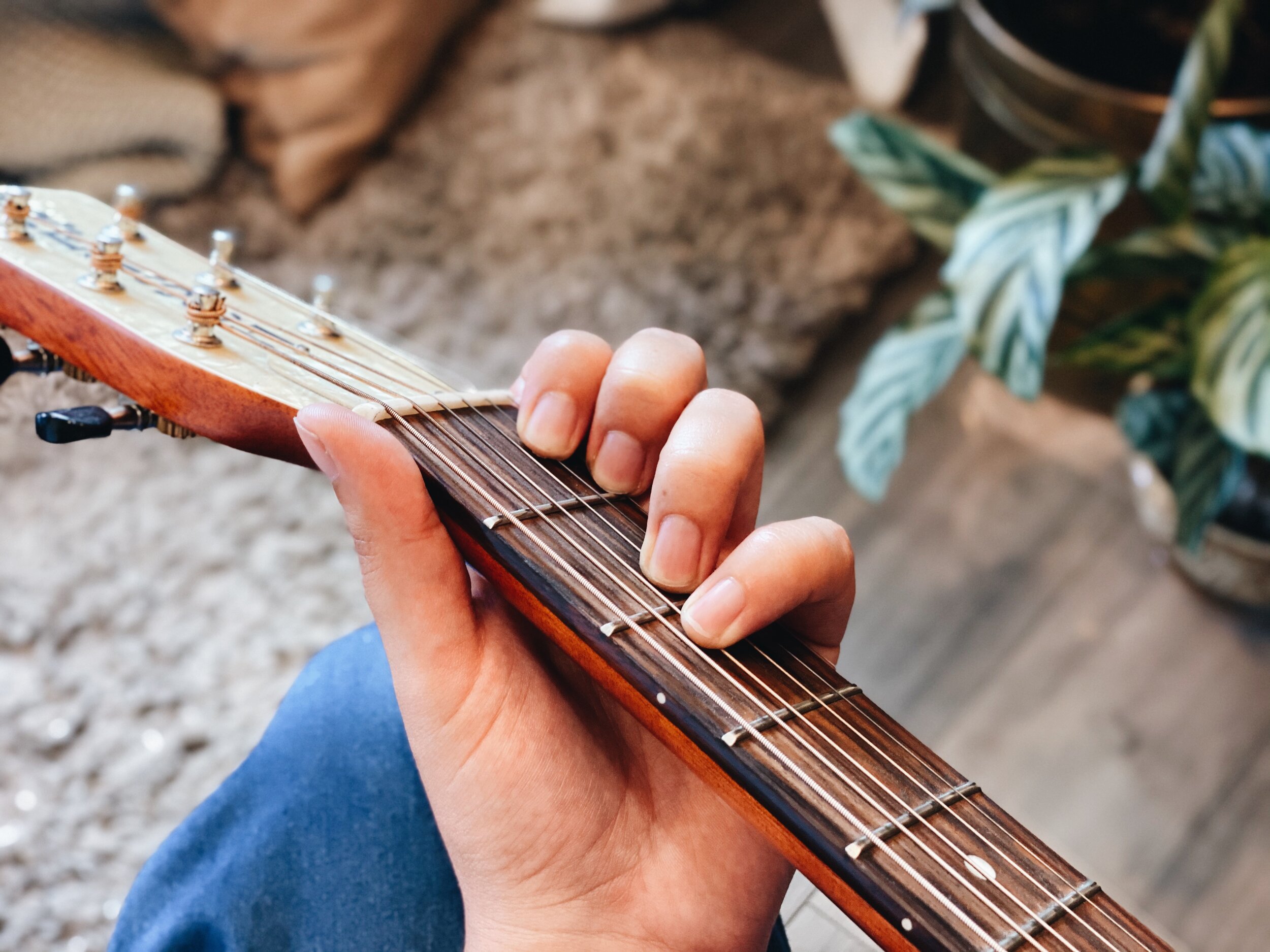Mini Chords: Baby Steps for Guitar

In my last post of 10 easy songs you can play on guitar, I included three alternate versions of a few common chords. These alternate versions are known as “mini chords,” “easy,” or “little,” chords. What this refers to, is of them being a part- or section- of their full chord counterparts.
These small chords can be played in place of their full ones if you are finding the big ones too difficult to play.
And there is nothing wrong with that! Taking baby steps- or walking before we run- is an extremely helpful way to begin learning something new. It’s when we bite off more than we can chew that we can feel frustrated and dejected, and that’s just counter productive!
When I began teaching myself guitar, I had all the time in the world on my hands ( I was 10 years old and a bored kid in the summer time), so I experimented and started by playing what I could. Of course, I was a lot smaller back then, and so were my fingers. So, instead of strumming a full G chord, I found myself playing just the bottom half of it- on the high strings. I remember to this day, strumming my high little G chord (it was the first one I learned) and being content to slide it up and down a couple frets at a time. One of my first memories of really enjoying guitar was when I played around with the sound of this. From then on, I kept experimenting, and just seeing… I wonder what this would sound like? Can I play this yet? No? Maybe I can play this instead for now… Oooo, that sounds cool!
And that’s what it’s all about! I mean- that’s why it's called ‘playing’ music- because we are meant to play with it!
Below are pictures and diagrams of chords C, G and F.
I chose these chords because they are commonly used and they are also some of the bigger open chords (non barre chords). So, these are the ones beginners will most likely need simpler versions of.
Try playing around with both versions of these chords, and just see what your hands can do! Today you might start with the smaller version or maybe even the bigger one if you feel you can go for it- but either way- you are playing! And that’s all there is to it.
*NOTE that in each mini chord diagram you will see half of the strings X’d out on the bottom. What that means is you DO NOT strum those strings. For mini chords, you will only be strumming the bottom three strings (the high/treble notes). Since your fretting is smaller, so is your strumming section!












